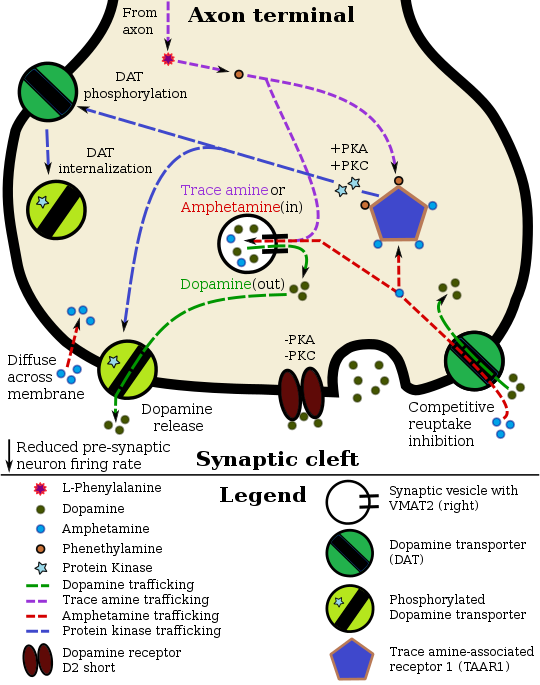
Amphetamine pharmacodynamics
Подписчиков: 0, рейтинг: 0
|
苯丙胺在多巴胺能神經元的藥物效應動力學
via AADC
|
To transclude this template, use:
-
{{Amphetamine pharmacodynamics |caption= |header= |align=}}.
The defaults are displayed on the page as is.
The image's default alternative text (i.e. |alt= parameter) is "A pharmacodynamic model of amphetamine and TAAR1".
Amphetamine pharmacodynamics Category:Diagram images Category:TAAR1 agonists
| 编者可以在本模板的沙盒 (创建 | 镜像)和测试样例 (创建)页面进行实验。 本模板的子页面。 |
